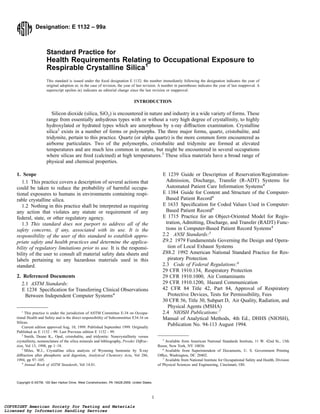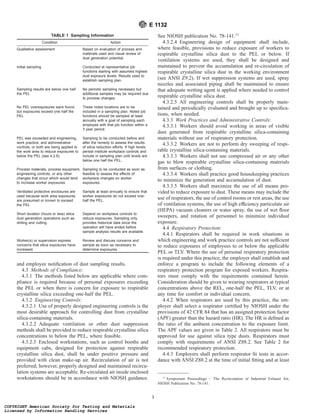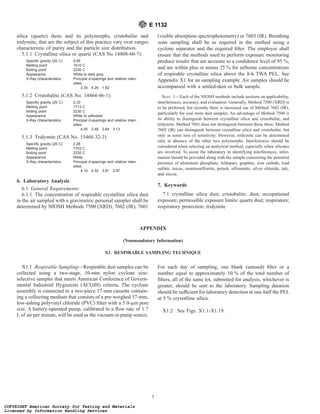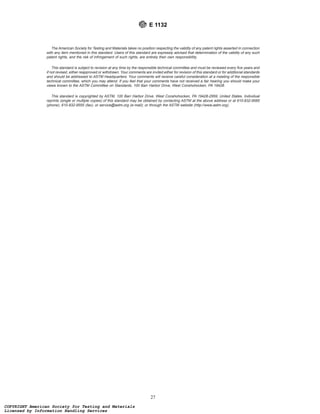This standard provides guidelines for reducing occupational exposure to respirable crystalline silica. It describes permissible exposure limits according to OSHA, MSHA, ACGIH and NIOSH. It outlines requirements for exposure assessment and monitoring, including initial sampling of worker exposures, periodic sampling, maintaining exposure records, and sampling locations. When monitoring finds exposures above the permissible limits, appropriate respirators must be worn and an exposure control plan implemented until exposures are reduced below the limits.


























